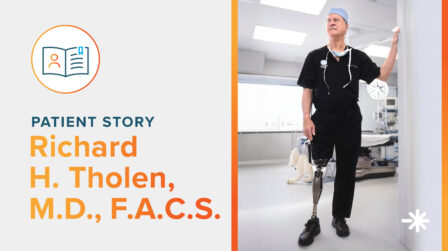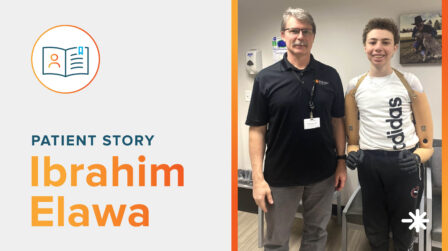Understanding Hip Dysplasia
Hip dysplasia, also referred to as developmental dysplasia of the hip (DDH), is a condition where a baby’s hip joint does not form correctly. The upper portion of the joint (acetabulum) does not form well over the top of the leg bone (femoral head). This condition can lead to a higher risk for hip dislocations. If not detected and treated at a very early age, the hip may remain dislocated and a surgical procedure may be necessary to correct the issue.
Diagnosis
Hip dysplasia is a common part of the newborn screening and is checked for routinely by the pediatrician during well-baby visits. The pediatrician will gently bend the knees and hips while moving the legs apart and together, as they feel and listen for clicking. Other signs may include uneven folds on the back of the thighs and a difference in the lengths of the legs.
Treatment
Early intervention is vital in providing optimal outcomes for children with developmental hip dysplasia. If the condition continues untreated, damage to the soft cartilage surrounding the socket will likely present as pain in the hips, at which point further evaluation by your child’s care team is needed.
If hip dysplasia is suspected, the pediatrician may order an ultrasound to determine if the hip sockets are forming correctly. They may also recommend a consultation with a pediatric orthopedic surgeon.
When diagnosed as an infant, soft bracing with a hip abduction brace (or hip orthosis) typically corrects the problem. Most hip abduction braces, including the common Pavlik Harness, consist of a shoulder harness that attaches to foot stirrups in order to hold the hips in proper, stable alignment and encourage normal development of the hip joint. Your physician will prescribe the appropriate wear time for your child, but most infants complete treatment within three months.
After 6 months of age, X-rays of the hip may be taken to check on the development of the hips. If there is a need for additional treatment after 6 months, a soft hip brace is used which provides more control compared to the softer harness.
Request a Free Evaluation
Our team of clinical experts has extensive experience treating children with hip dysplasia. To find out if a hip brace is right for your child, reach out to a Hanger Clinic Pediatric Specialist today to schedule a free consultation.
Latest Updates
Subscribe to stay up-to-date on our latest posts.


